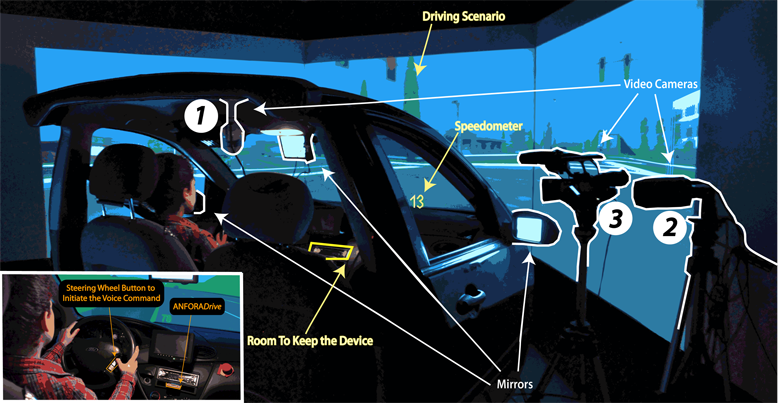ANFORADrive

Methodology
- Controlled evaluation study with 60 participants in the driving simulation lab
- Wizard-of-Oz technique
- Quantitative and qualitative analysis
Problem Space
Linkless ANFORA could also be used in driving contexts, where people want to consume both audio and news while on the road. We call this concept ANFORADrive.
Research Question
Does using a voice-controlled aural flow (ANFORADrive) reduce distraction and improve driving performance compared to a commercially available solution (Umano) or driving without any device?
My Approach
I conducted a controlled evaluation study in a driving simulation lab with 60 participants. Each participant drove through three levels of driving complexity: low, moderate, and high. Within each scenario, participants experienced one of three conditions: no device, voice-controlled aural flows (ANFORADrive), or the commercial solution (Umano).
Impact
- Demonstrated that ANFORADrive does not increase distraction, cognitive effort, or visual interaction compared to not using any device
- Showed that ANFORADrive outperforms existing commercial solutions (Umano) by reducing distraction, lowering visual interaction time, and improving user satisfaction
- Revealed mixed effects on driving performance and overall safety, highlighting opportunities for further refinement
My Responsibilities
- Planned and structured the controlled evaluation study
- Led data collection with 60 participants in a driving simulation lab
- Analyzed driving performance and user data to evaluate safety and usability outcomes
Fundings
NSF-funded research project “Navigating the Aural Web”, PI: Dr. Davide Bolchini
Funding Opportunities for Research Commercialization and Economic Success (FORCES) by IUPUI Office of the Vice-Chancellor for Research (OVCR)–"Eyes-Free Mobile Navigation with Aural Flows", PI: Dr. Davide Bolchini
Dissertation Document
Rohani Ghahari, R., (2015, September). Eyes-free Interactions With Aural User Interfaces![]()